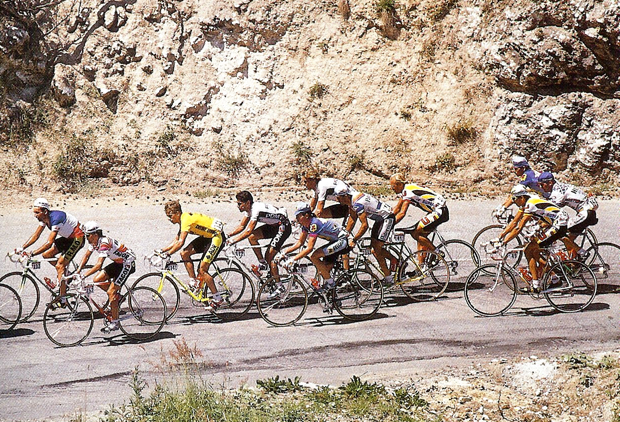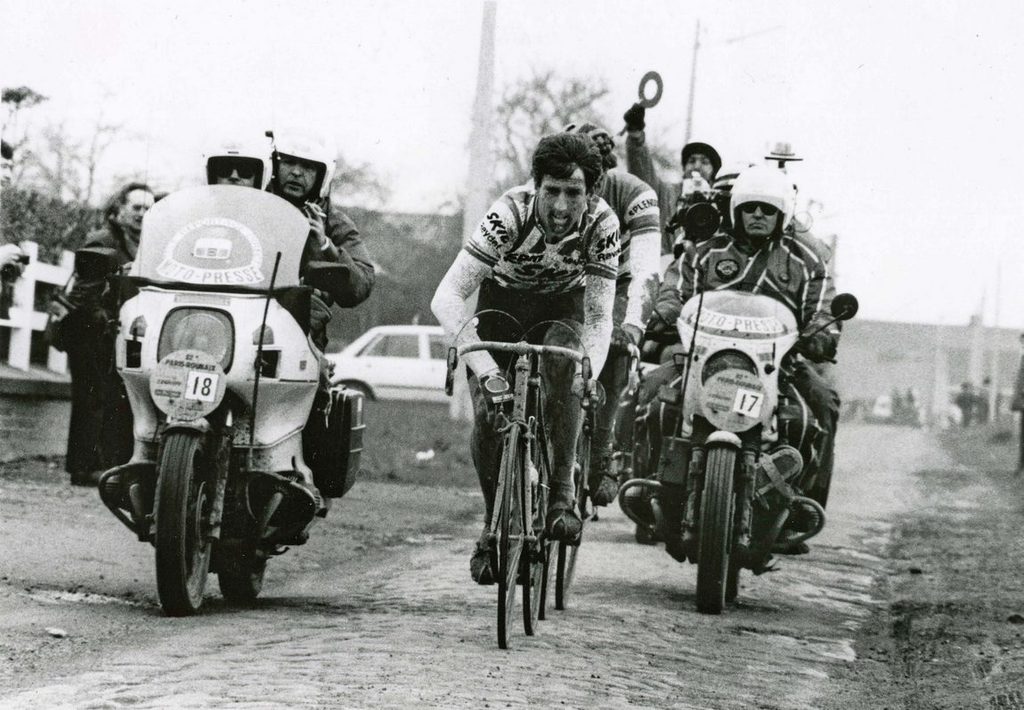The Death of the Grand Tour

Suspense. It defines the thrill of watching a bike race. Johan Van Summeren, his deflated rear tire clanging over the last secteurs of cobblestones in Paris-Roubaix with Fabian Cancellara breathing down his back; Laurent Fignon snatching seconds from Greg LeMond on each mountaintop finish, as LeMond snatches those same seconds back in the time trials. From the spectators standpoint at least, suspense categorically defines good bike racing.
Bike racing is a monumentally difficult sport, with even the one-day races representing a magnificent display of endurance. Many one-day races are 200 or more kilometers over difficult terrain and in awful weather, where riders need to be fit, strong, and alert at all times during a competition that lasts upwards of six hours. Grand Tours distinguish themselves by aggregating the challenges from the one-day races into a three-week event; their sheer length cause riders to not only battle each other but themselves as fatigue creeps in, brought on by racing twenty days along windy coastal roads, over high mountains – in baking heat or torrential rain. Simply finishing a Grand Tour labels a rider as a “Giant of the Road”, the designation given to those few who were good enough and hard enough to endure this ultimate test of determination and stamina. Those who manage to win one will be defined by the accomplishment for the remainder of their career and, quite possibly, their lives. The V, brought to life and personified in each one of them.
Historically, one of the distinguishing factors of Grand Tour contenders has been their superiority over their rivals in one discipline or another, while typically being bested in another discipline. The Grimpeur who soars over the mountains shows weakness when they go contre la montre. The Rouleur who gains an advantage in the time trials struggles to limit their losses over the high passes. The route, the terrain, their weaknesses, and their ability to respond to the tactics of each stage characterizes the three-week struggle for domination. There is no other event on Earth like it.
The grimpeur versus the rouleur has been the Grand Tour’s great struggle, for what Merckx giveth in the Mountains, Merckx taketh away in the Time Trial. The emaciated body that the climber uses to float up the steepest gradients is little more than a waifish weather vane in the time trails where sheer strength and power are the keys to success. Conversely, the additional body mass required to generate time trial-winning power becomes an anchor when pointed uphill, allowing gravity and physics to do their cruel work.
Where in the past we’ve seen riders who could ride amongst the best in both the mountains as well as the time trials, these riders were never the dominant figure in either of both disciplines. Anquetil was strong in the time trials but struggled in the mountains – the same goes for Indurain. Hinault, LeMond, and Ullrich were strong in the time trails and, while good climbers, were always bested by others on the high passes. Fignon and Pantani could take time away from their rivals on the vicious slopes of the high mountains, but struggled to maintain their advantage in the time trials. It all came together to form a ferocious battle of riders pitting their strengths against their rivals’ weaknesses, and their rivals coming back to do the same another day when conditions were more in their favor.
Yet, in the last decade, we’ve seen an alarming shift in the qualities of some top Grand Tour contenders. With Lance Armstrong and Alberto Contador, we have seen a new class of rider who is the best climber in the world while also the best time trialist; while an awesome display of skill, it puts paid to the excitement of watching a Grand Tour unfold. Each of Armstrong’s wins came at the hands of devastating mountaintop wins coupled with domination in the Time Trials. Similarly, Contador’s 2009 record-setting VAM (Vertical Ascension in Meters) on the climb of Verbiér came alongside his defeat of World-Champion time trialist, Fabian Cancellara, his frail climber’s body managing to best the most powerful rider in the peloton.
Whatever lies at the root of this transformation, it seems these riders have found a way to abolish their weakness in these opposed disciplines, and can execute their race plans with surgical, three-week precision. With that precision comes the death of the Grand Tour; for it is the weakness of our heros that lends us the opportunity to revel in the thrill of their victories. Without that weakness, we have gained an impressive show of dominance, and lost the spectacle of suspense.


@Jeff in PetroMetro
And Nascar… Although our euro-brethren are just as nutty about F1 and Moto GP, and the Aussies seem to like this:
http://youtu.be/xZjCT1VaEZQ
@Marcus
It’s not just the IT sector that can be fairly called Silicon Valley! Gotta love Southern California!!!
As for the beer though, you simply didn’t choose well… Stone, The Lost Abbey, Dogish Head, Allagash, Avery, Ballast Point… there are some really stellar breweries in America and I’d reckon The Lost Abbey can go toe to toe with anyone worldwide. The 2009 Angels Share and the 2008 Lost Abbey ‘Allaverdogportrush’ Isabelle Proximus are two of the best beers I’ve ever tried. Tomme Arthur knows what he’s doin…
@Leroy
Fixed your post, mate.
@Nate
@Marcus
Indeed with the destination problem. Go north, young man, and buy beer.
@sgt
Woooohoooo! Yeah!!!!!!!
http://www.youtube.com/watch?v=_isgXzxIa24
“I wake up every mornin’ and I piss excellence.” Hell Yeah.